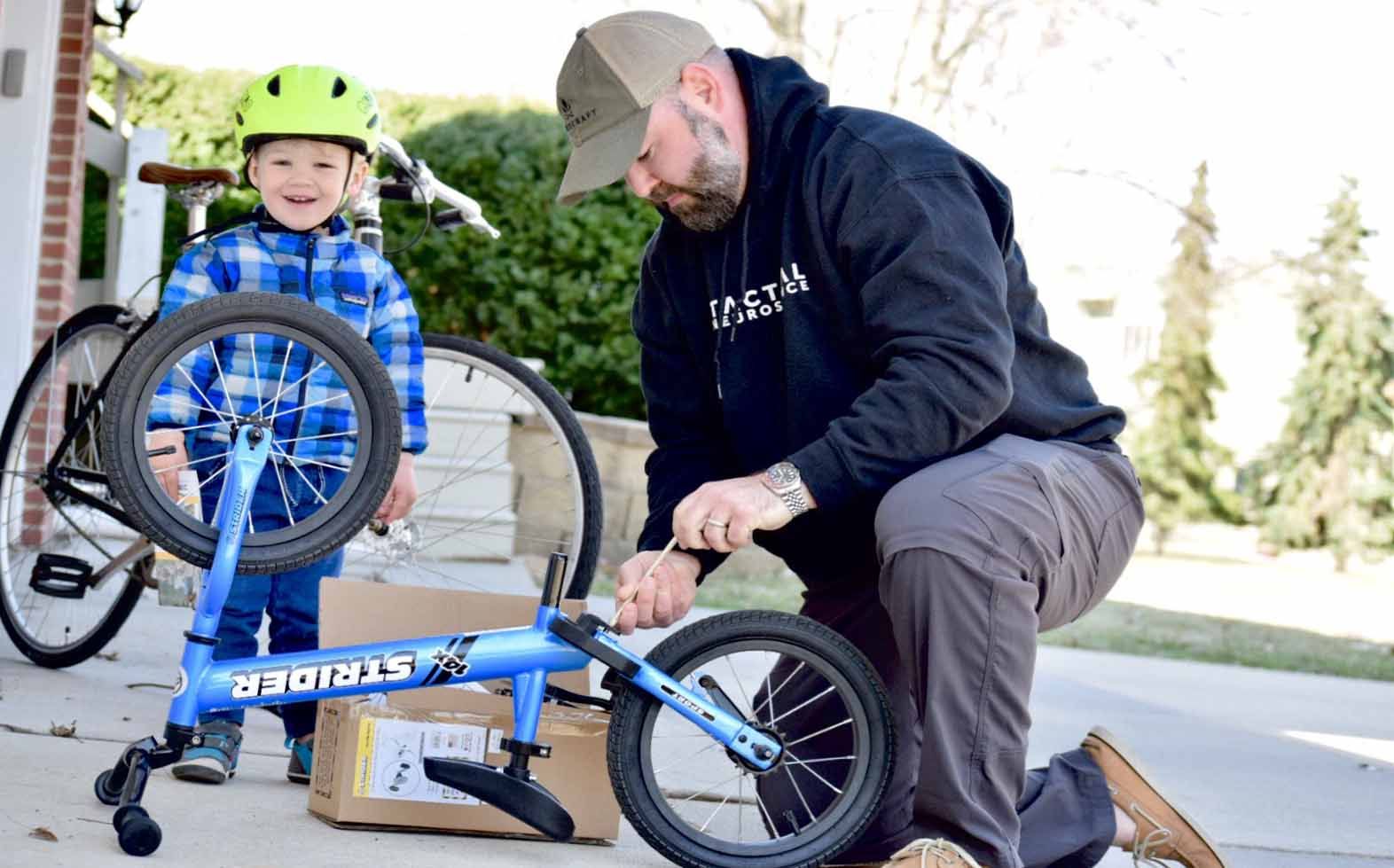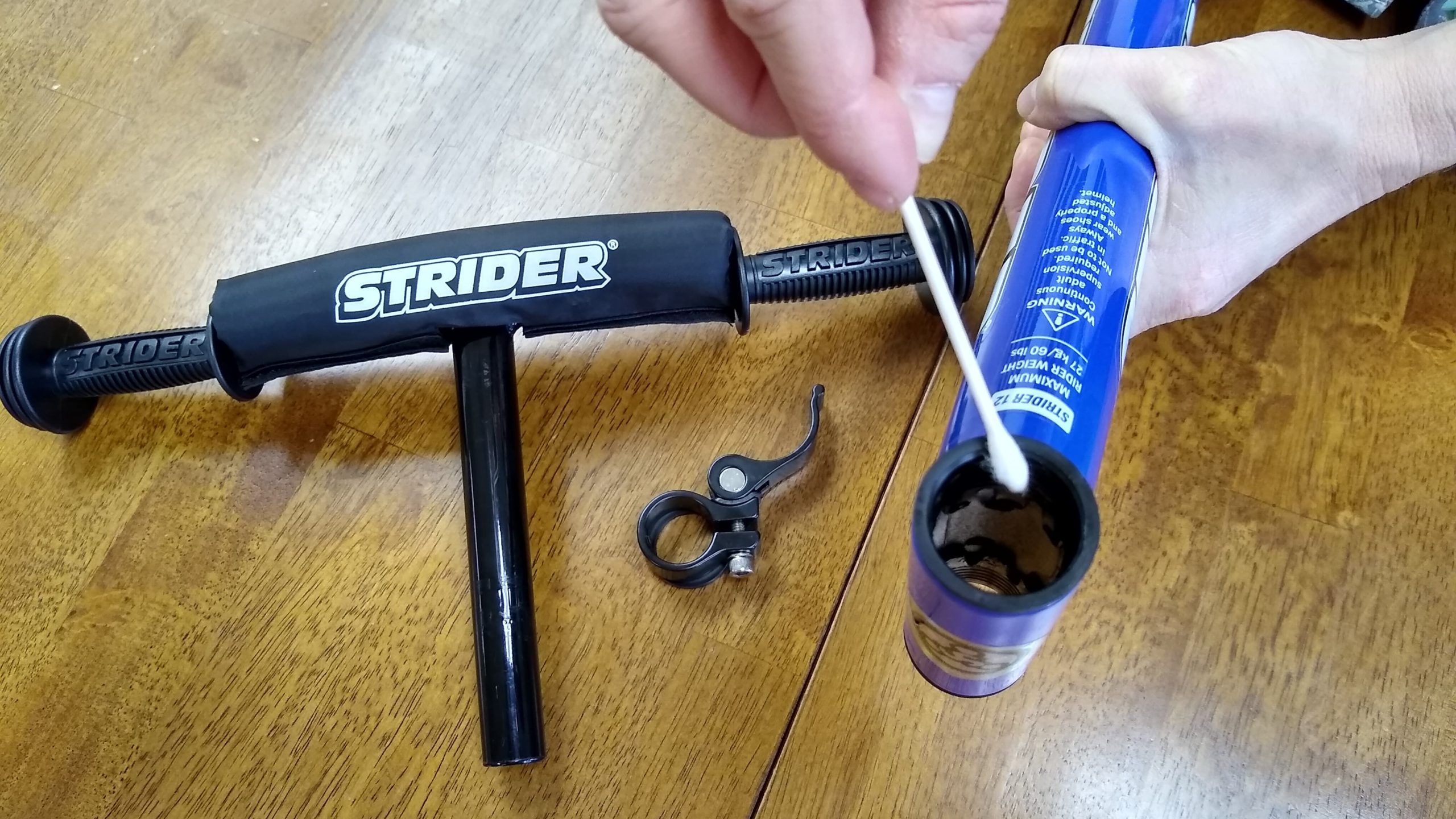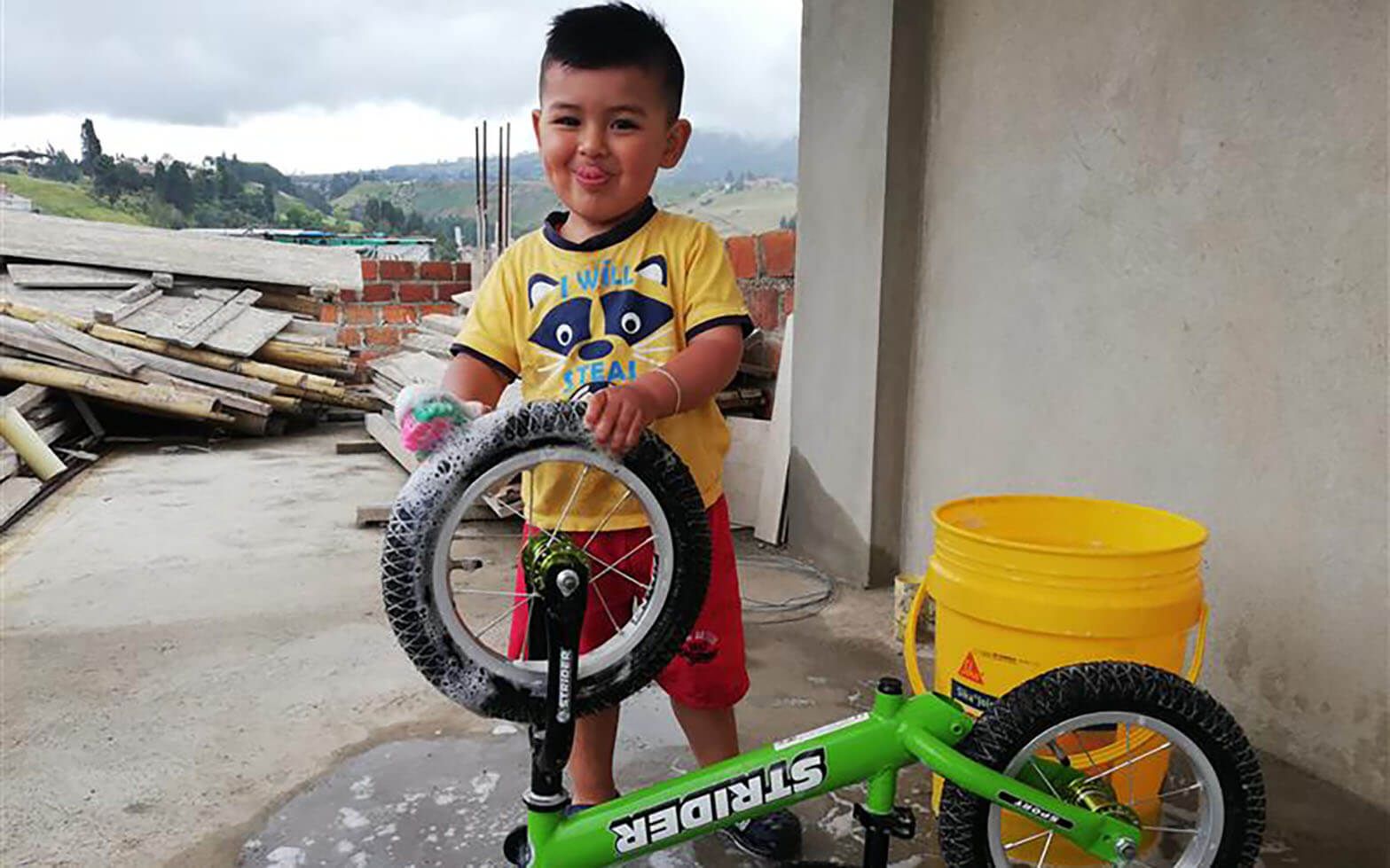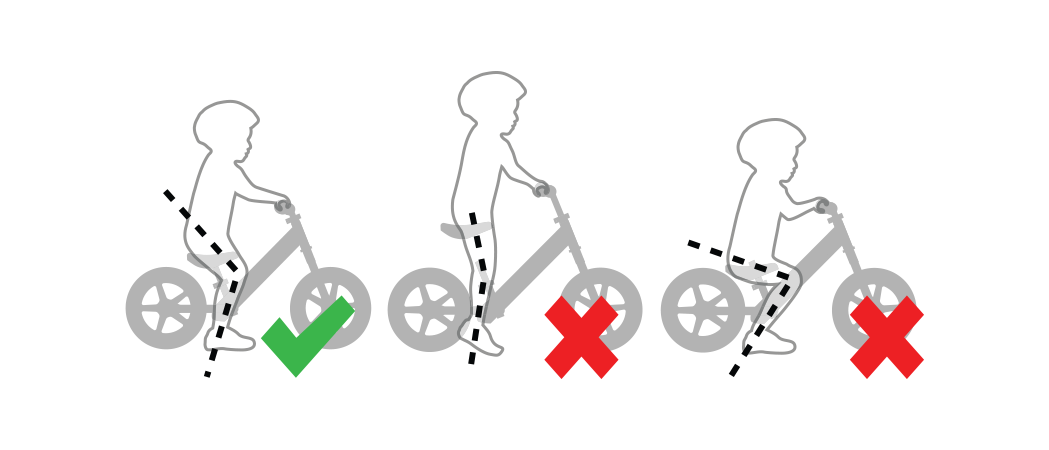Strider Maintenance tips
Get Your Strider Indoor Ready

Spending more time inside, with wild kiddos, is the reality for most of us these days. Usually, during this time of year, when the days are getting longer and warmer, we start excitedly pulling pogo sticks, baseball bats, and bikes out of the shed to prepare for picnics and barbeques. This year things are definitely different. Luckily, Strider Bikes are fun to ride both outdoors and in. So, go ahead and get that bike out anyway. We’ve got a few maintenance tips to get your Strider Bike ready for a new season of riding (with extra cleaning tips to prep for the great indoors).
1. Grease the Bushings
When a bike sits unused through the winter, dust particles can accumulate and cause parts to get “sticky.” You might notice that the handlebars catch or do not turn smoothly. If that happens, quickly greasing the bushings will save a lot of wear and tear. The bushings sit inside the stem where the handlebars and fork attach. Remove the handlebar clamp, take out the handlebars, and remove the fork. Put a small amount of grease or Vaseline on the end of a Q-tip and rub inside the top and bottom bushings, located in the stem. Put the handlebars, fork, and clamp back together. A little grease goes a long way to smooth out steering and keep your Strider in tip-top condition.

2. Bike Wash
A good, thorough bike bath is perfect for an afternoon activity with your toddler. Whether you’re cleaning the bike for hours of indoor fun or getting it ready for rides outside, every bike can benefit from cleaning off dust and mud. Fill a bucket with warm water and a drop or two of mild dish soap. Find an area outside that won’t create mud when wet, like a thick grassy area or a patch of cement. In a pinch, a bathtub will work. Use a sponge or washrag in the soapy water and wash all parts of the bike. Make sure to spin the wheels to make sure they are cleaned adequately. Rinse the bike, then let it dry.

3. Replace Parts
Give your Strider Bike a careful inspection. Check the condition of the seat, handlebars, grips, and wheels. Perhaps some little critter nibbled on them all winter, or they’re showing signs that they have been well used (and loved). No need for a new bike, we have replacement parts (CHECK THEM OUT!); some are even available in multiple different colors for a chance to add some personal style.
4. Readjust
Kids grow like weeds; we don’t have to tell you that. As they grow, check seat and handlebar height often. To check seat height, have your kiddo sit on the bike with shoes on. Adjust the height of the seat until there is a slight bend in their knees. The best starting point for handlebar height is to set it with respect to the seat. If the seat is at its lowest setting, set the handlebar to also be at its lowest setting, etc. Try multiple adjustments to find out what makes your child feel the most comfortable and confident.
To check seat height, have your kiddo sit on the bike with shoes on. Adjust the height of the seat until there is a slight bend in their knees.

5. General Check
Now is the time for you and your kiddo to give the bike one last thorough look-over together. Go over it part by part. Check the frame to make sure nothing has been cracked or bent. Spin the front and back wheels to make sure they move freely. Move the handlebars back and forth to check that they turn smoothly. Yes! Now your bike is all ready for another awesome riding season – even if it starts indoors.